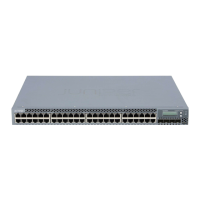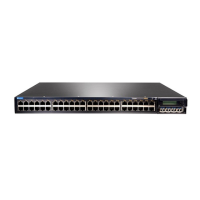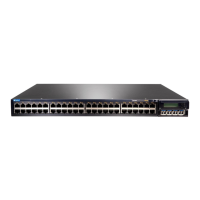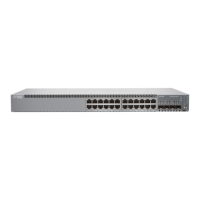enable local link bias if you want egress traffic load-balanced across the member links
in the LAG bundle as it exits the Virtual Chassis or VCF.
Related
Documentation
Configuring Local Link Bias (CLI Procedure) on page 94•
Understanding Layer 3 Subinterfaces
A Layer 3 subinterface is a logical division of a physical interface that operates at the
network level and therefore can receive and forward 802.1Q VLAN tags. You can use
Layer 3 subinterfaces to route traffic among multiple VLANs along a single trunk line that
connects a Juniper Networks EX Series Ethernet Switch to a Layer 2 switch. Only one
physical connection is required between the switches. This topology is often called a
router on a stick or a one-armed router when the Layer 3 device is a router.
To create Layer 3 subinterfaces on an EX Series switch, you enable VLAN tagging, partition
the physical interface into logical partitions, and bind the VLAN ID to the logical interface.
You can partition one physical interface into up to 4094 different subinterfaces, one for
each VLAN. We recommend that you use the VLAN ID as the subinterface number when
you configure the subinterface. Juniper Networks Junos operating system (Junos OS)
reserves VLAN IDs 0 and 4095.
VLAN tagging places the VLAN ID in the frame header, allowing each physical interface
to handle multiple VLANs. When you configure multiple VLANs on an interface, you must
also enable tagging on that interface. Junos OS on EX Series switches supports a subset
of the 802.1Q standard for receiving and forwarding routed or bridged Ethernet frames
with single VLAN tags and running Virtual Router Redundancy Protocol (VRRP) over
802.1Q-tagged interfaces. Double-tagging is not supported.
Related
Documentation
EX Series Switches Interfaces Overview on page 3•
• Example: Configuring Layer 3 Subinterfaces for a Distribution Switch and an Access
Switch
• Junos OS Ethernet Interfaces Configuration Guide
Copyright © 2015, Juniper Networks, Inc.18
Network Interfaces for EX4300 Switches
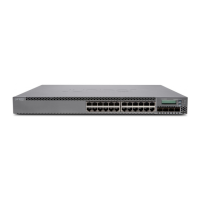
